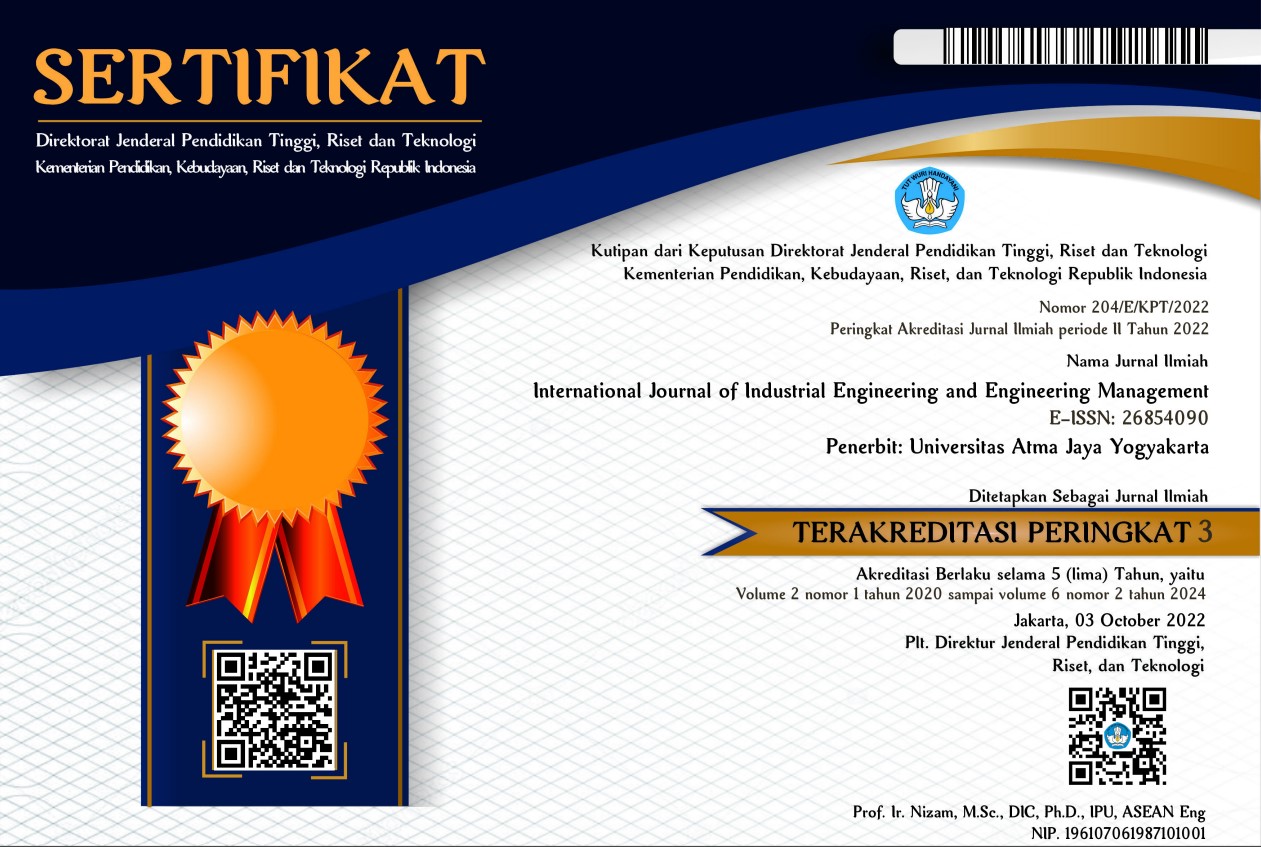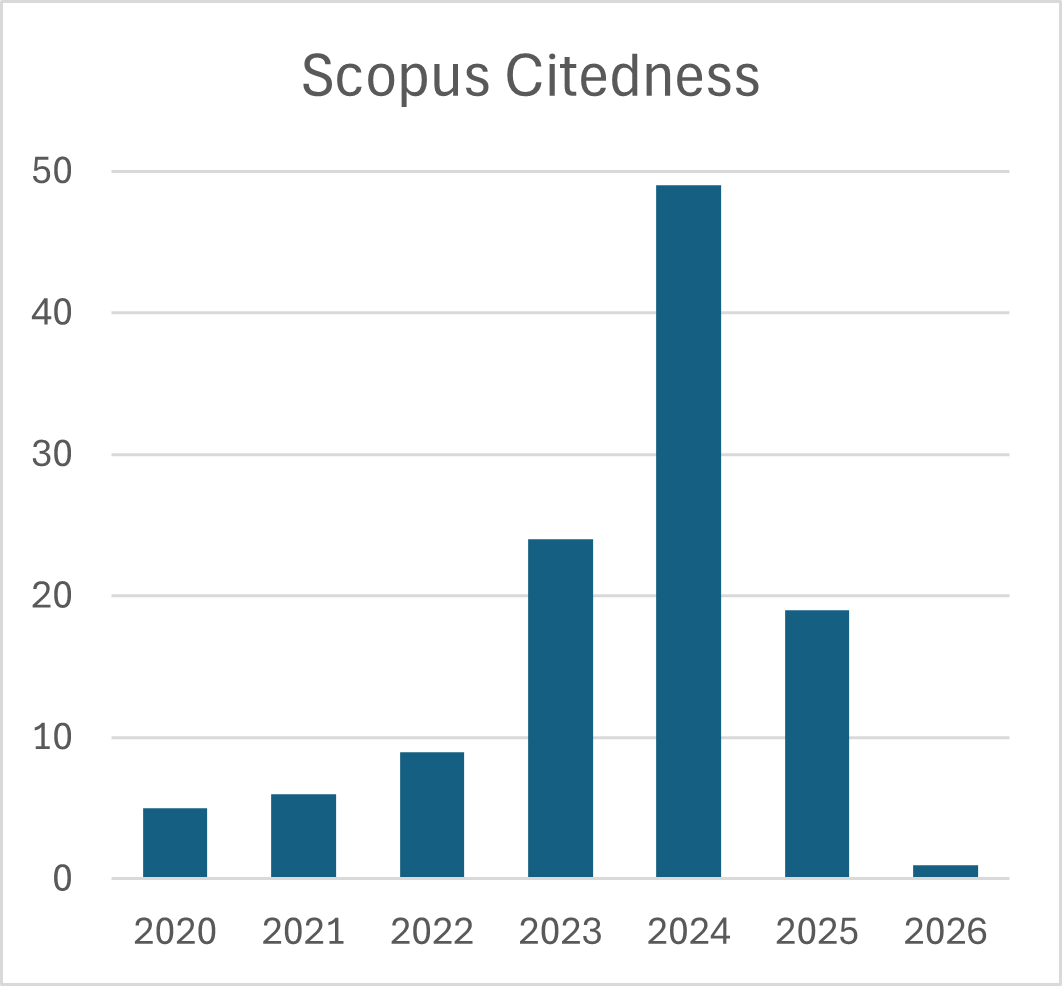Simulation-based Reliability Evaluation of Maintenance the Efficiency of A Repairable System
DOI:
https://doi.org/10.24002/ijieem.v4i2.6233Keywords:
Repairable systems reliability, bathtub failure intensity, imperfect maintenance, estimation, likelihoodAbstract
The aim of this paper is to study the asymptotic behavior of the Arithmetic Reduction of Intensity (ARI) and Arithmetic Reduction of Age (ARA) models as two imperfect maintenance models. These models have been proposed by Doyen & Gaudoin (2011), the failure process with bathtub failure intensity. The maintenance effect is characterized by the change induced by the failure intensity before and after a failure during the degradation period. To simplify the study, the asymptotic properties of the failure process are derived. Then, the asymptotic normality of several maintenance efficiency estimators can be proved in the case where the failure process without maintenance is known. Practically, the coverage rate of the asymptotic confidence intervals issued from those estimators is studied.
References
Bening, V.E. (2018). On the asymptotic behavior of the deficiency of some statistical estimators based on samples with random sizes. Journal of Applied Mathematics and Statistical Applications, 1(2), 32-41.
Chan, J. K., & Shaw, L. (1993). Modeling repairable systems with failure rates that depend on age and maintenance. IEEE Transactions on Reliability, 42(4), 566-571.
Chahrour, N., Nasr, M., Tacnet, J.M., & B´erenguer C. (2021). Deterioration modeling and maintenance assessment using physics-informed stochastic Petri nets: Application to torrent protection structures. Reliability Engineering & System Safety, 210, Article 107524.
Dijoux, Y., Fouladirad, M., & Nguyen, D.T. (2016). Statistical inference for imperfect maintenance models with missing data. Reliability Engineering & System Safety, 154, 84-96.
Doyen, L., & Gaudoin, O. (2004). Classes of imperfect repair models based on reduction of failure intensity or virtual age. Reliability Engineering & System Safety, 84(1), 45-56.
Doyen, L., & Gaudoin, O. (2011). Modeling and assessment of aging and efficiency of corrective and planned preventive maintenance. IEEE Transactions on Reliability, 60(4), 759-769.
Doyen, L., Drouilhet, R., & Breniere, L. (2019). A generic framework for generalized virtual age models. IEEE Transactions on Reliability, 69(2), 1-17.
Han, X., Wang, Z., Xie, M., He, Y., Li, Y., & Wang, W. (2021). Remaining useful life prediction and predictive maintenance strategies for multi-state manufacturing systems considering functional dependence. Reliability Engineering & System Safety, 210, Article 107560.
Jin, K., Kim, H., Ryu, S., Kim, S., & Park, J. (2022). An approach to constructing effective training data for a classification model to evaluate the reliability of a passive safety system. Reliability Engineering and System Safety, 222, Article 108446.
Joshi, R.W., Tian, Q., Shaurya, A., Arora, P., & Guo, W. (2019, August 9-14). Simulation and Analysis of Preventive Maintenance Scheduling Techniques for Fruit-Roll Packaging Line. Paper presented at the25th International Conference on Production Research Manufacturing Innovation: Cyber Physical Manufacturing, Chicago, USA.
Liu, X., Finkelstein, M., Vatn, J., & Dijoux, Y. (2020). Steady-state imperfect repair models. European Journal of Operational Research, 286(2), 538-546.
Mendoza, J., Bismut, E., Straub, D., & Köhler, J. (2022). Optimal life-cycle mitigation of fatigue failure risk for structural systems. Reliability Engineering & System Safety, 222, Article 108390.
Nguyen, D.T., Dijoux, Y., & Fouladirad, M. (2016). Analytical properties of an imperfect repair model and application in preventive maintenance scheduling. European Journal of Operational Research, 256(2), 439-453.
Nunes, V.A., & Barbosa, G.F. (2020). Simulation-based analysis of AGV workload used on aircraft manufacturing system: a theoretical approach. Acta Scientiarum Technology, 42, 1-10.
Ruiz-Hernández, D., Pinar-Pérez, J.M., & Delgado-Gómez, D. (2020). Multi-machine preventive maintenance scheduling with imperfect interventions: A restless bandit approach. Computers & Operations Research, 119, Article 104927.
Si, W., Love, E., & Yang, Q. (2018). Two-state optimal maintenance planning of repairable systems with covariate effects. Computer & Operations Research, 92, 17-25.
Syamsundar, A., Naikan, V. N. A., & Shaomin, W. (2021). Estimating maintenance effectiveness of a repairable system under time-based preventive maintenance. Computers & Industrial Engineering, 156(2), Article 107278.
Teixeira, R., Martinez-Pastor, B., Nogal, M., & O’Connor, A. (2021). Reliability analysis using a multi-metamodel complement-basis approach. Reliability Engineering & System Safety, 205, Article 107248.
de Toledo, M.L.G., Freitas, M.A., Colosimo, E.A., & Gilardoni, G.L. (2015). ARA and ARI imperfect repair models: Estimation, goodness-of-fit and reliability prediction. Reliability Engineering & System Safety, 140, 107-115.
Xiaoyang, M., Liu, B., Yang, L., Peng, R., & Zhang, X. (2020). Reliability analysis and condition-based maintenance optimization for a warm standby cooling system. Reliability Engineering & System Safety, 193, Article 106588.
Downloads
Published
How to Cite
Issue
Section
License
Copyright (c) 2022 Makram Krit

This work is licensed under a Creative Commons Attribution 4.0 International License.








